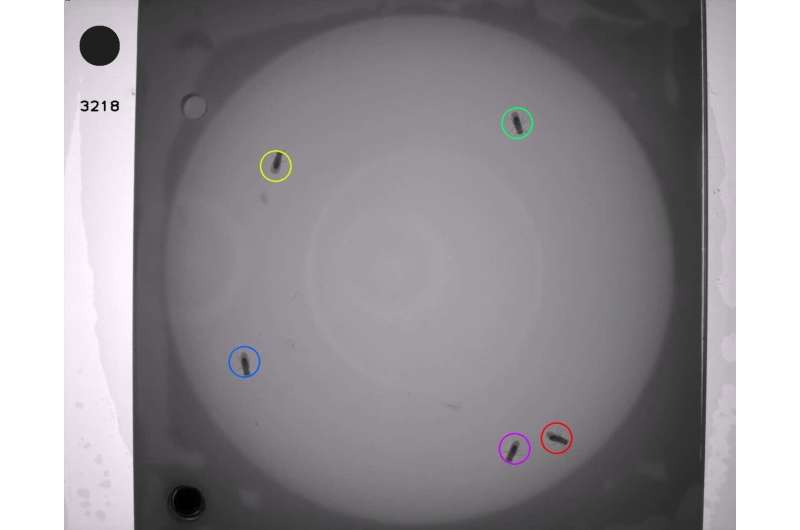Greater threat, greater syntony in fruit flies

Who knew that those little flies that hover around the fruit bowl are social animals? Who knew that, when under threat, they would follow cues given by other flies?
Does a fly faced with danger behave like a sheep? Does the group always affect a threatened fly the same way, or is it dependent on the level of the threat?
Researchers from the Behavioral Neuroscience Laboratory at the Champalimaud Foundation, in Portugal, strive to understand how social context influences the individual's response to threats. Previously, they have shown that when fruit flies in a group are faced with an inescapable threat, they lower their defenses compared to when alone. They further observed that if the other flies freeze, then so will the individual; when the group starts moving again, the individual quickly follows. Being in tune with the surrounding flies seems to bring security.
In their most recent paper, now published in Frontiers in Ecology and Evolution, researchers from the laboratory reveal that, when faced with a threat, the reactions of a fruit fly within a group depend on the level of that threat. At the beginning of the study, opinions were divided: on the one hand, there were those who thought that in the presence of a greater threat, the fly would pay less attention to the group because it would focus its maximum attention on its perception of the threat; on the other hand, there were those who considered that, faced with a greater threat, the flies would pay more attention to their surroundings, including the behavior of other flies.
In order to measure a fly's response, in the presence of the same social cues but under different threat levels, Clara Ferreira and Marta Moita, postdoctoral researcher and principal investigator, respectively, designed an ingenious experiment.
This experiment involved a group of flies that had been genetically manipulated so that they could not see the stimulus that was used as a threat (a dark circle moving toward it) and a group of flies in which a particular type of visual system neuron was activated through optogenetics, a technique that combines light and genetics, capable of activating and deactivating neurons. This allowed the researchers to subject the fly to social stimuli that were not affected by the threat level.
The results were clear: For higher levels of threat, flies respond more to social evidence transmitted by the group. For Clara Ferreira, this makes perfect sense: "We know that the freezing response to the threat is energetically expensive, so it is of the utmost importance to limit this response to what is strictly necessary. Attunement with other animals allows the individual to respond quickly to the threat and be able to return to normalcy as soon as possible."
Marta Moita concludes that "in the future, we would like to explore this idea further. That is, to understand how the attunement between animals in a group allows for a more adjusted response to the threat and what neuronal mechanics underlie this attunement."
More information: Clara H. Ferreira et al, Social Cues of Safety Can Override Differences in Threat Level, Frontiers in Ecology and Evolution (2022). DOI: 10.3389/fevo.2022.885795
Journal information: Frontiers in Ecology and Evolution
Provided by Champalimaud Centre for the Unknown




















